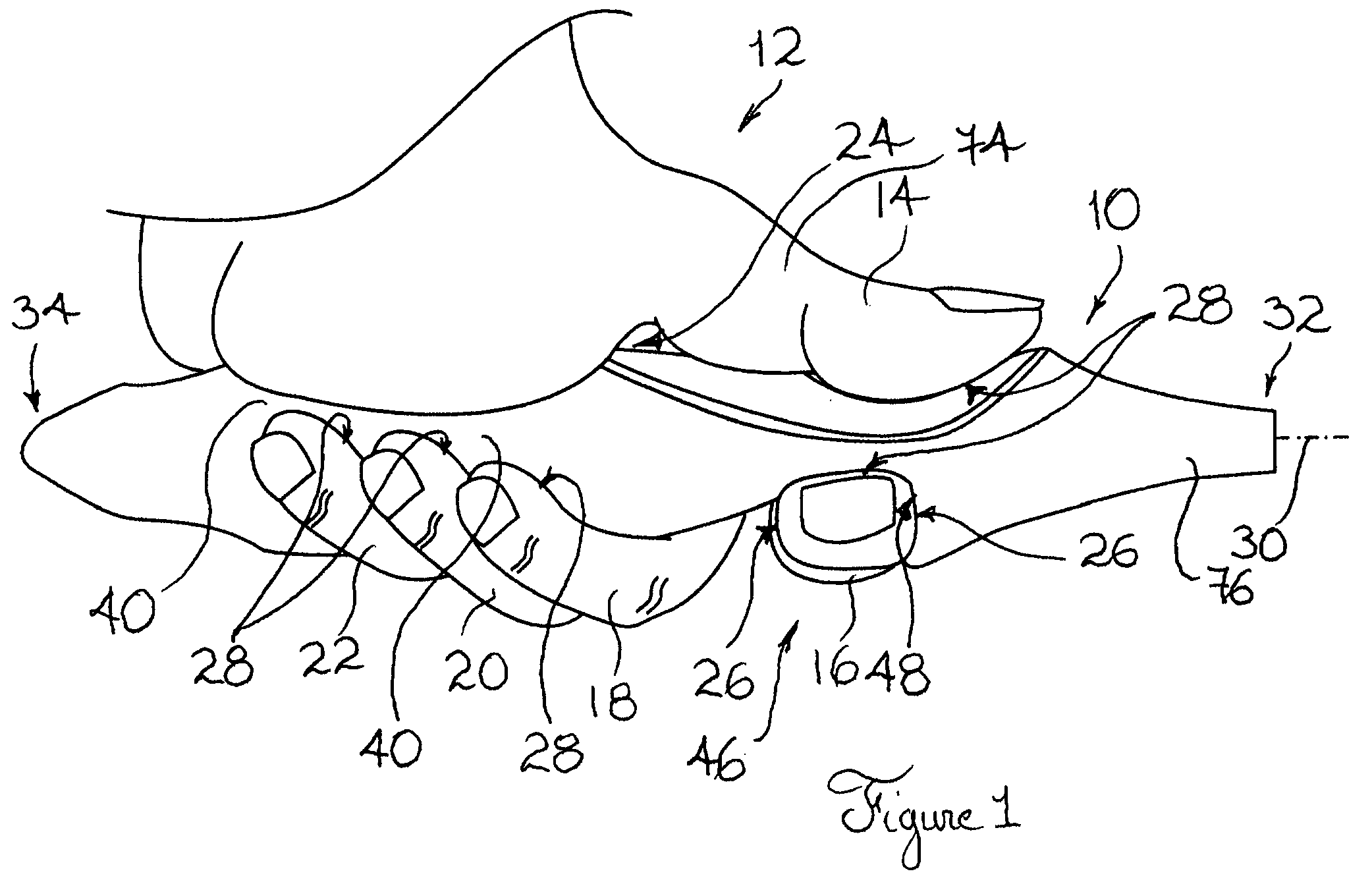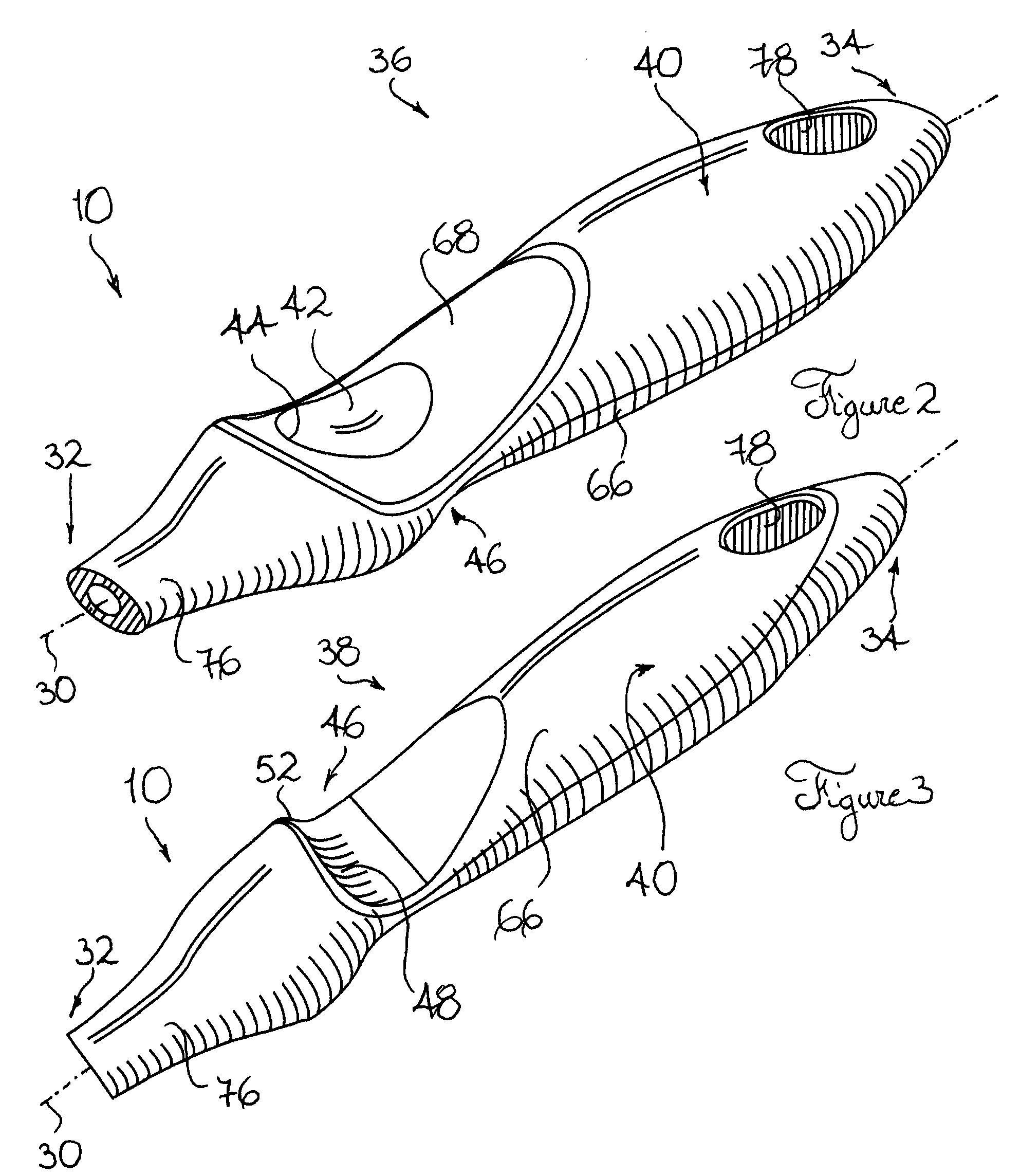Implement handle
a technology of implement handles and handles, applied in the field of handles, can solve the problems of difficult cleaning of conventional cleaning operations, inconvenient cleaning, and difficulty in cleaning conventional cleaning operations, and achieve the effects of convenient quick and easy ergonomic positioning of hands, trouble-free operation, and convenient cleaning through conventional cleaning operations
- Summary
- Abstract
- Description
- Claims
- Application Information
AI Technical Summary
Benefits of technology
Problems solved by technology
Method used
Image
Examples
Embodiment Construction
[0063]Referring to FIG. 1, there is shown an implement handle, in accordance with an embodiment of the present invention, generally indicated by the reference numeral 10. The handle 10 is shown being grasped by a hand 12 of an intended user. The hand 12 includes a thumb 14, an index finger 16, a middle finger 18, a ring finger 20 and a small finger 22.
[0064]Each finger 14 through 22 extends from a palm 24. Each finger 14 through 22 includes a pair of corresponding finger lateral surfaces 26 and a corresponding distal pulp 28.
[0065]Throughout the Figures, the implement handle 10 is shown in isolation. However, in use, the implement handle 10 is typically connected or attached to an implement head (not shown). The implement head (not shown) may take any suitable form without departing from the scope of the present invention.
[0066]By way of example, the implement handle 10 could be connected to the implement head of a culinary implement such as a knife, a ladle, a spoon, a whisk or any...
PUM
 Login to View More
Login to View More Abstract
Description
Claims
Application Information
 Login to View More
Login to View More - R&D
- Intellectual Property
- Life Sciences
- Materials
- Tech Scout
- Unparalleled Data Quality
- Higher Quality Content
- 60% Fewer Hallucinations
Browse by: Latest US Patents, China's latest patents, Technical Efficacy Thesaurus, Application Domain, Technology Topic, Popular Technical Reports.
© 2025 PatSnap. All rights reserved.Legal|Privacy policy|Modern Slavery Act Transparency Statement|Sitemap|About US| Contact US: help@patsnap.com



